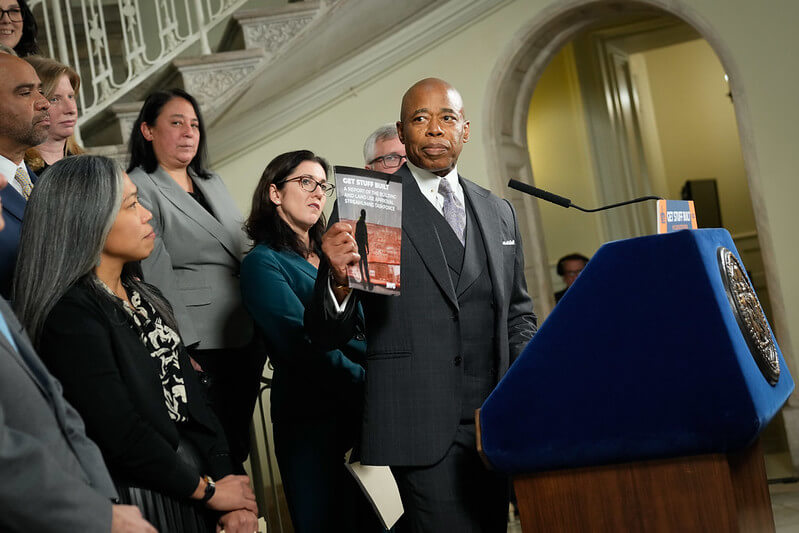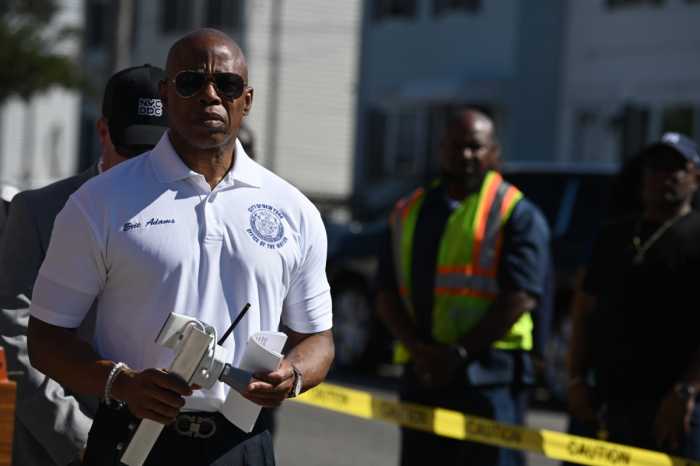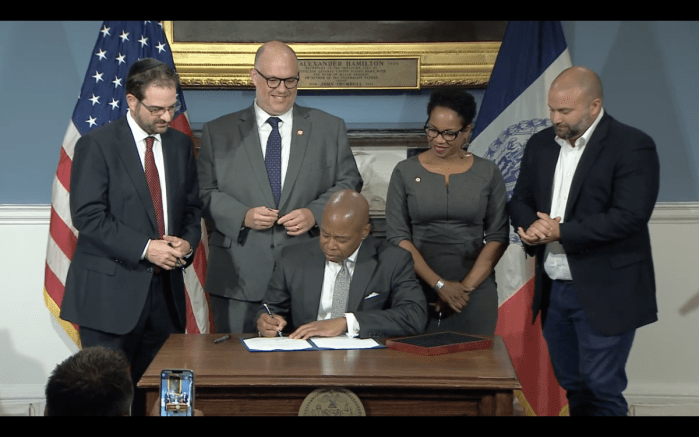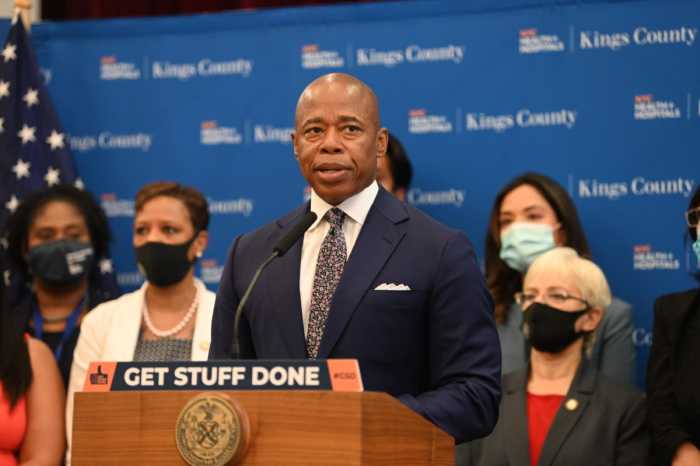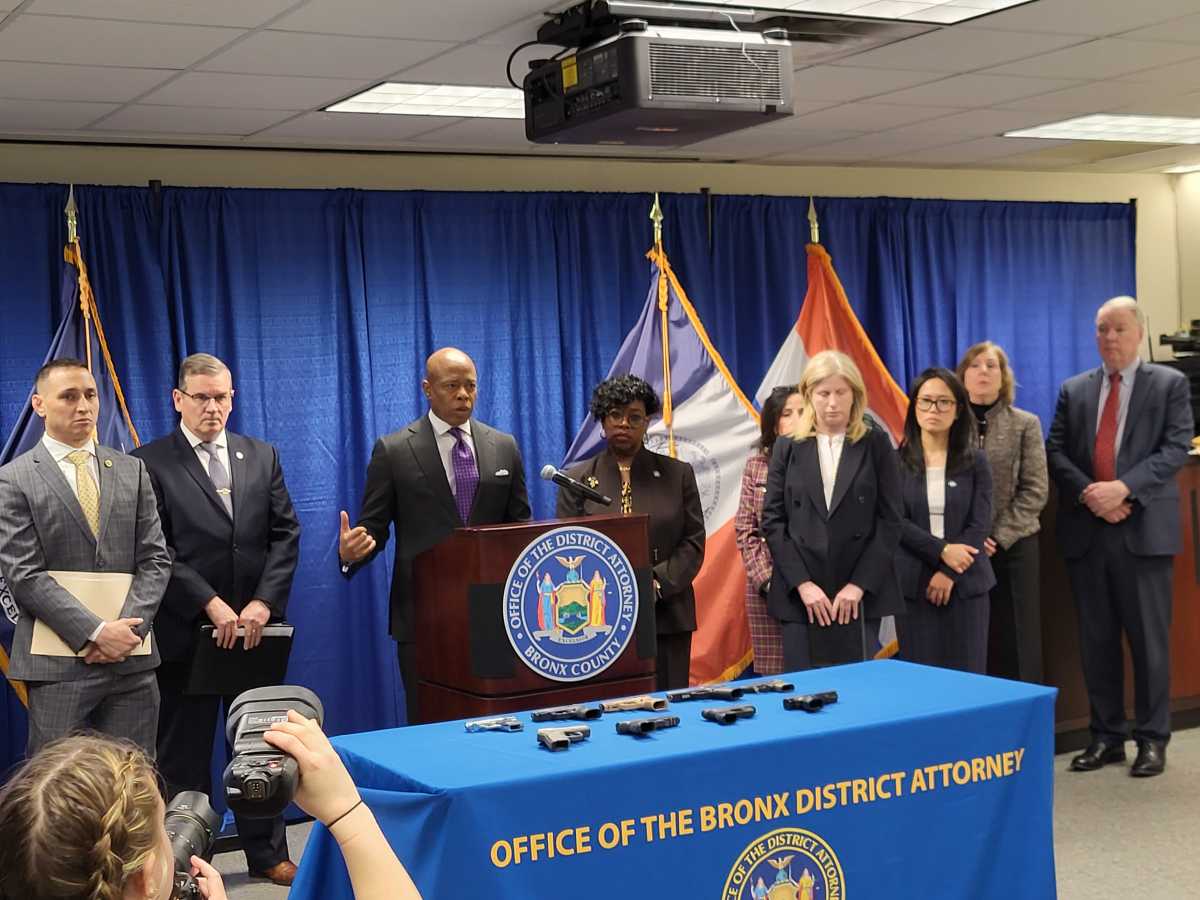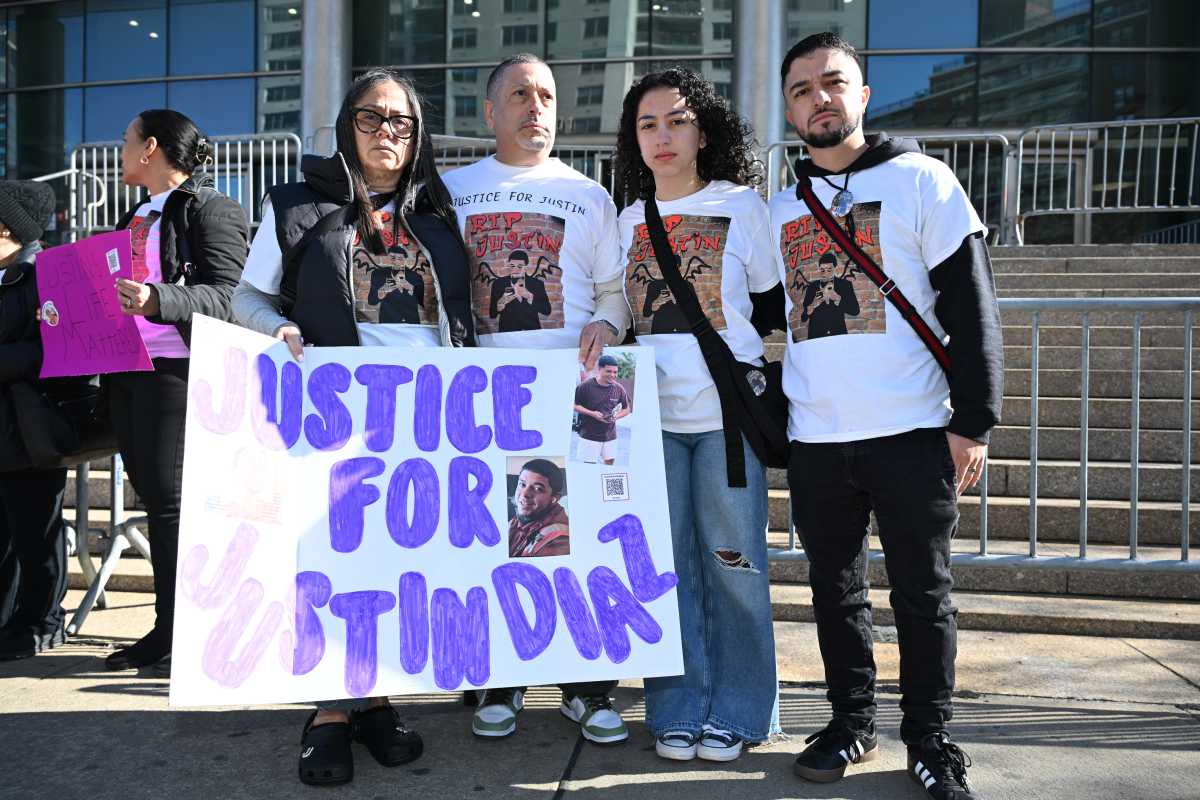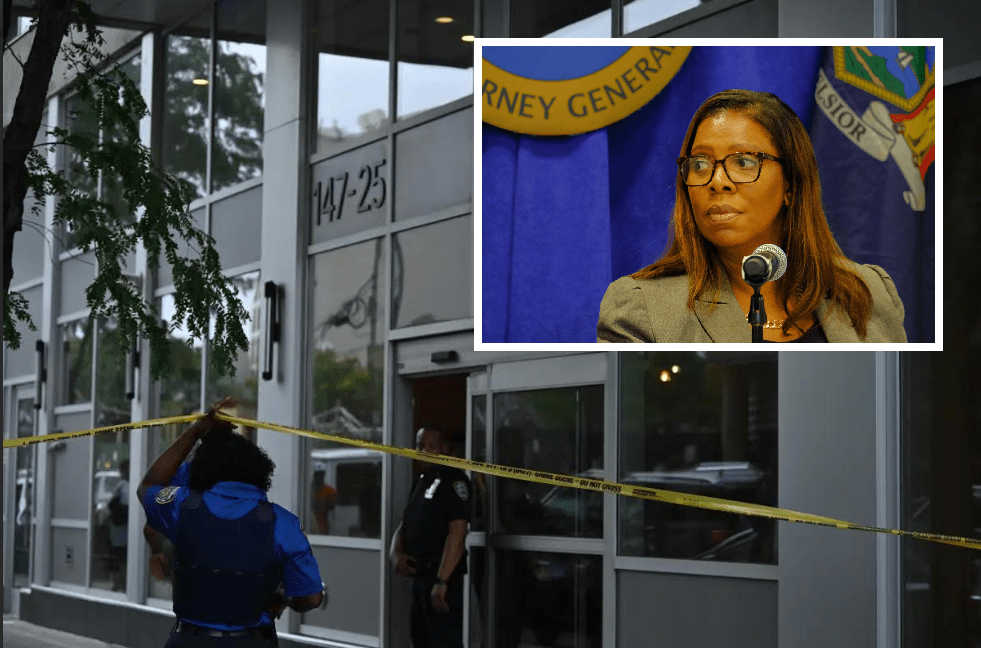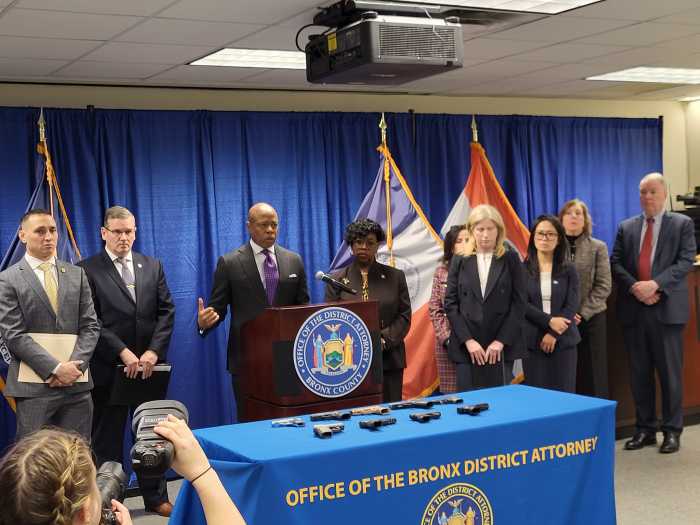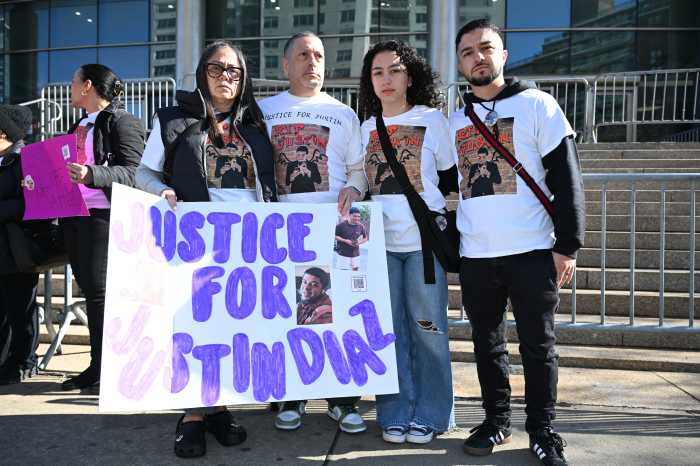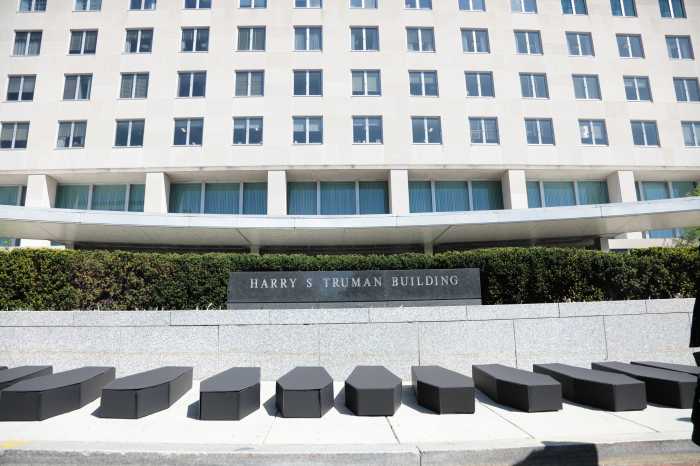Since taking office nearly a year ago, Mayor Eric Adams has been beating the drum on making it easier to build more desperately needed apartments across the five boroughs as a way to alleviate the city’s mounting housing crisis.
To that end, the mayor on Thursday announced perhaps his biggest action to take on the issue yet in a live streamed City Hall address where he rolled out “Get Stuff Built,” a package of 111 reforms aimed at making it easier to construct housing in the five boroughs by cutting down on regulations, updating old rules and reducing the price tag for developers.
The reforms were the result of recommendations of the Building and Land Use Approval Streamlining Taskforce (BLAST), which the mayor convened in June.
According to Adams, if all of the proposals in Get Stuff Built, which is laid out in a report of the same name, are enacted, housing project timelines in the city will be sped up by 50% – leading to the creation of 50,000 additional homes over the next decade.
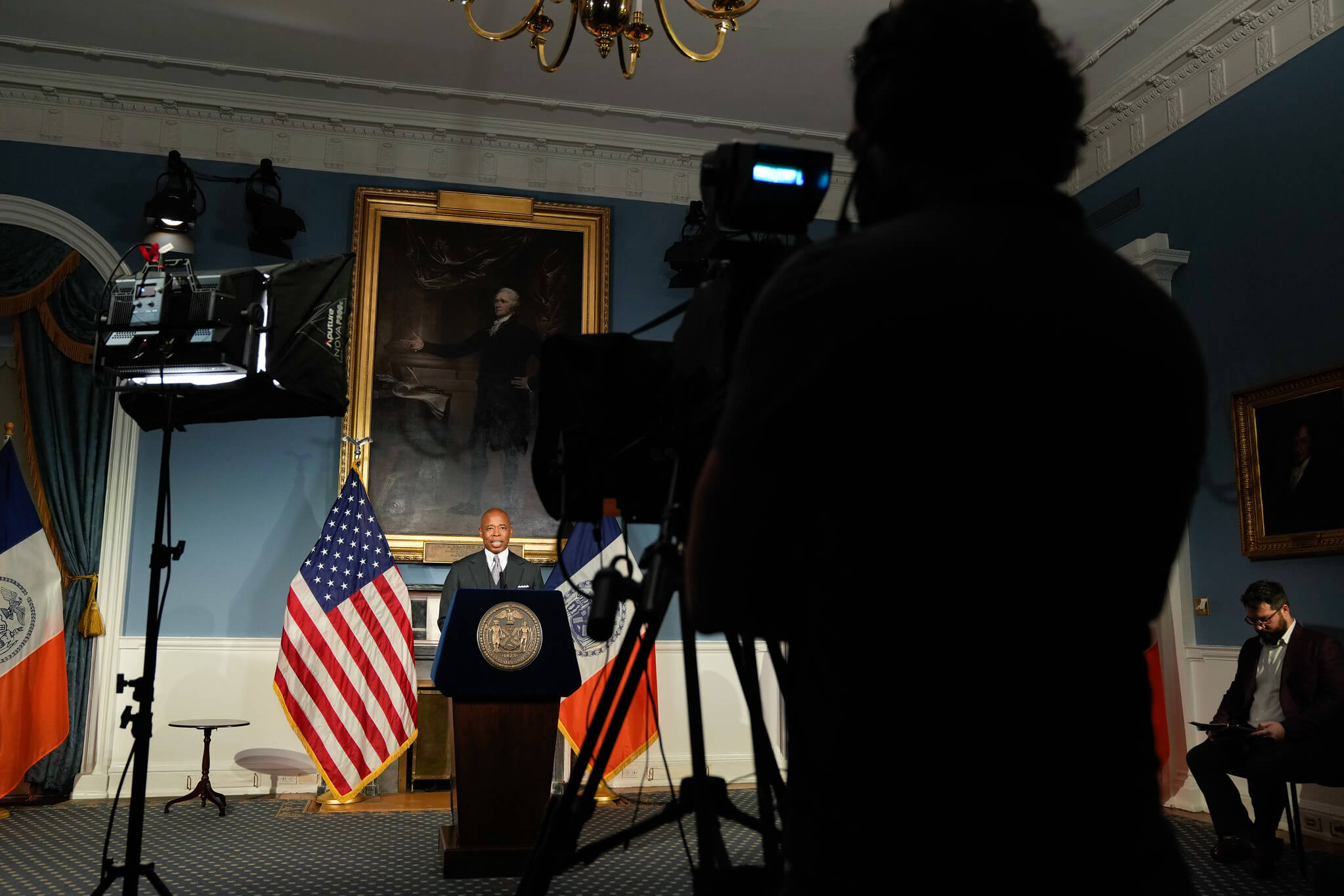
In unveiling the plan, City Hall also set an ambitious “moonshot” goal of constructing 500,000 new homes over the next 10 years. That stands in stark contrast to Adams, just a few months ago, refusing to set benchmarks for how many units would be built under his administration, when he released another housing plan in June.
While Adams’ administration can enact 94 of the proposed reforms on its own, 14 of the changes will require approval from the City Council and another two will need to be greenlit at the state level
During his address, the mayor detailed the sheer magnitude of the housing crisis currently staring down the city that he said leaves many individuals and families struggling to find and afford stable housing. At the center of the problem, Adams said, is that demand for housing far outpaces the supply of available units.
“In the last decade, New York city grew by nearly 800,000 people, but we added just 200,000 homes to our city,” Adams said. “It’s not complicated. We have more people than homes. This shortage gives landlords the power to charge any price they want and leaves too many New Yorkers with no place to go.”
“That needs to change and history is on our side,” he added. “We used to build things, we can do it again.”
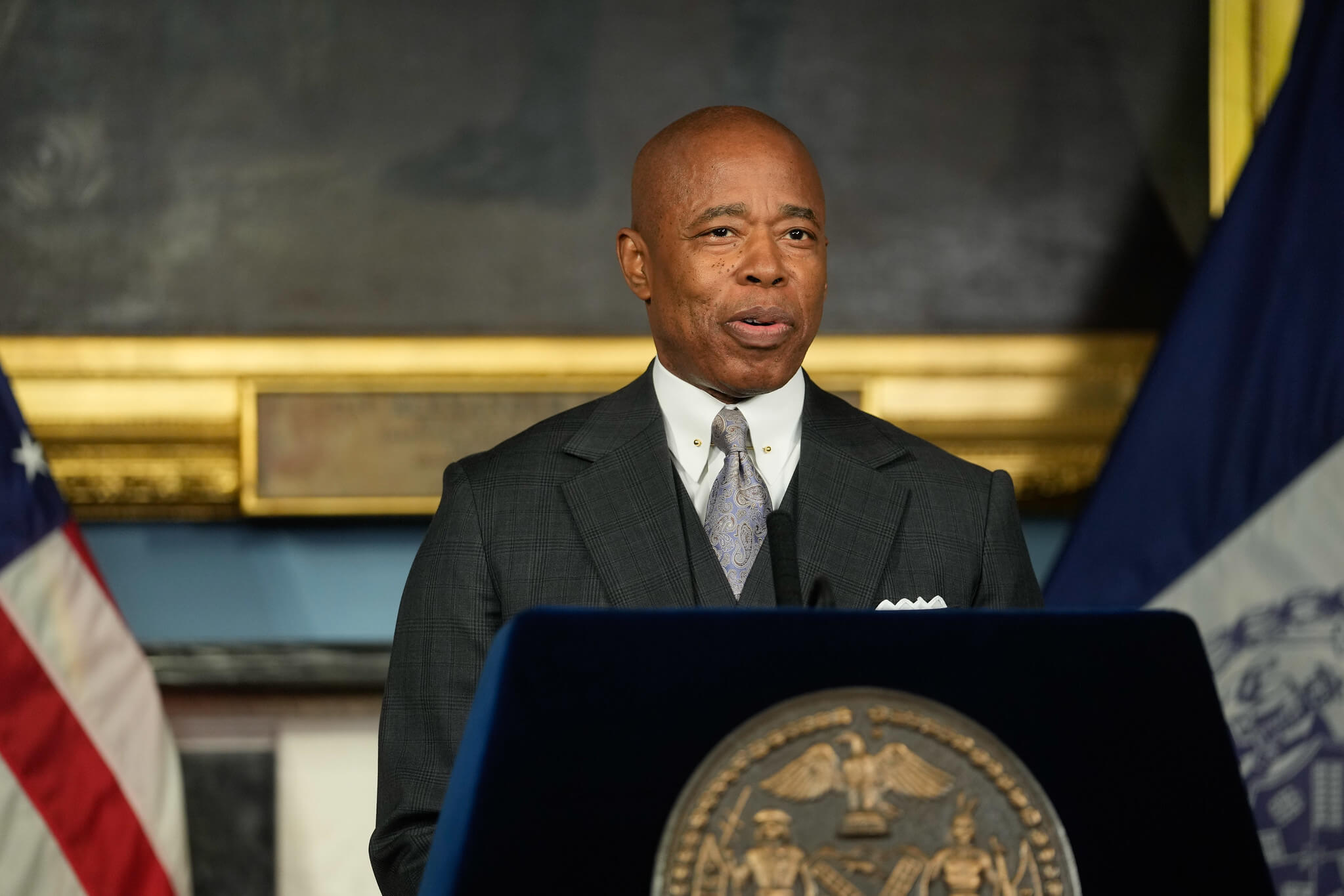
The changes to zoning rules and regulations include making the pre-certification that takes place before the city’s Uniform Land Use Review Procedure (ULURP), that most developments must go through, move more quickly; and eliminating the environmental review process, which assesses a project’s potential impact on the surrounding area, for proposals of under 200 units.
Adams said ULURP already takes long enough on its own and the pre-certification period can slow a project down significantly because it has no required timeframe, meaning it can take as long as two years to complete.
“The city has a process before you can start the process,” the mayor said. “We’re going to make the process faster by eliminating certain requirements. In other words, cutting red tape and bureaucracy.”
Environmental reviews, the mayor said, can take up to eight months to complete and can cost hundreds of thousands of dollars – an expense that gets passed onto tenants in their rent.
“We found that most smaller buildings have no significant impacts on the environment, yet, every new project is required to go through the same formal analysis,” Adams said. “We’re going to exempt small housing projects from that review so we can deliver new homes with lower costs.”
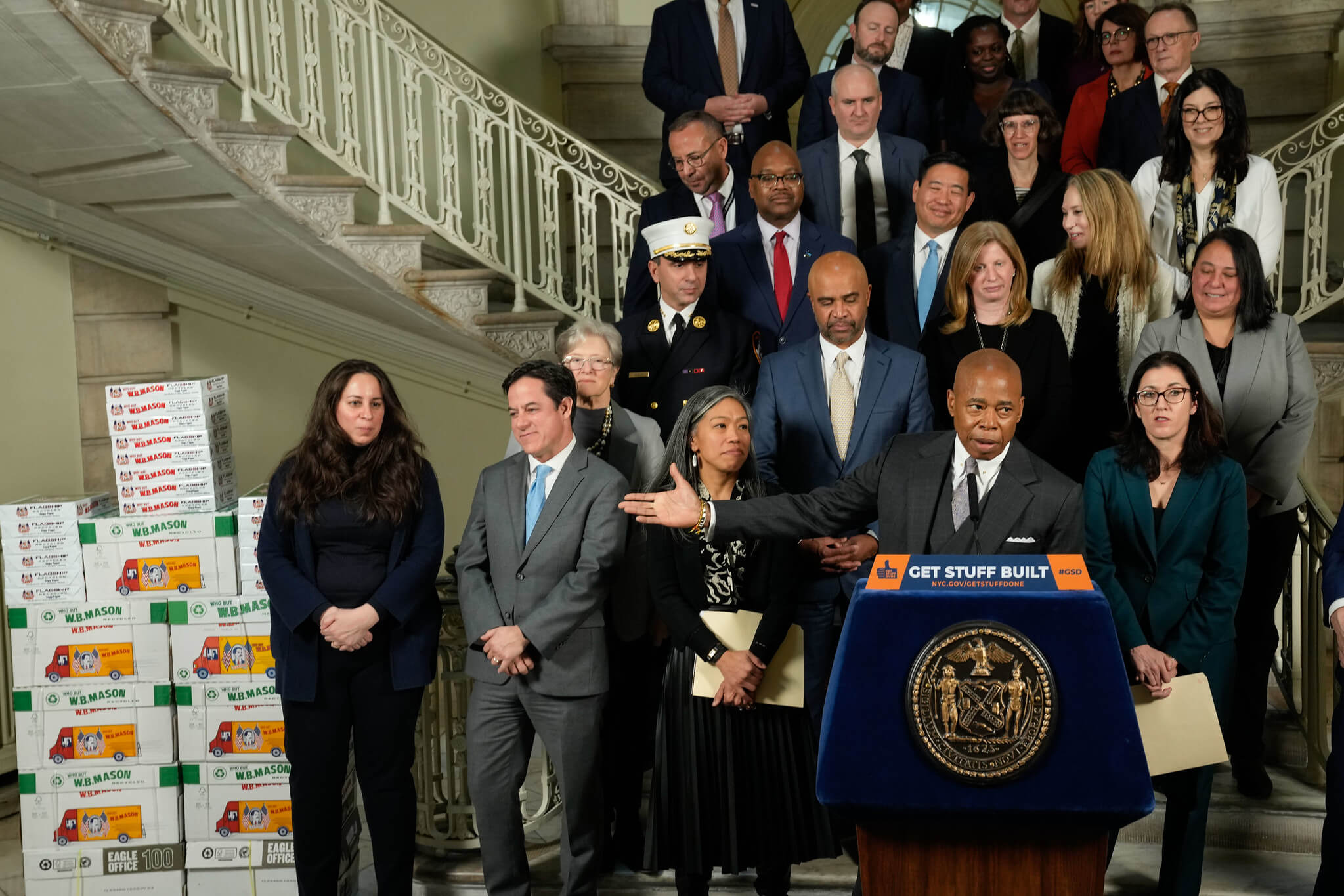
Other ways to quicken a proposal’s pace through ULURP include: changing the methodology for required traffic analysis, streamlining fire safety inspections and expanding a city Department of Buildings (DOB) portal for coordinating construction projects across city agencies.
The mayor also kicked off the environmental review periods for two major rezoning projects: one in the east Bronx and the other in central Brooklyn.
The first project, tied to the construction of four new Metro North stations slated to be completed in 2027, would bring 6,000 units – 1,500 of which will be “affordable” – to neighborhoods on the east side of the Boogie Down. The other would deliver thousands of new apartments along Atlantic Avenue, bordering the neighborhoods of Bed Stuy and Crown Heights.
Shortly after Adams released the plan, Governor Kathy Hochul released a statement showing her willingness to work with the mayor to build more housing in the Big Apple.
“My administration is ready to meet the housing crisis head-on in partnership with Mayor Adams and other local and state officials, and I look forward to sharing our proposals to unlock New York’s housing potential in my State of the State address,” Hochul said.
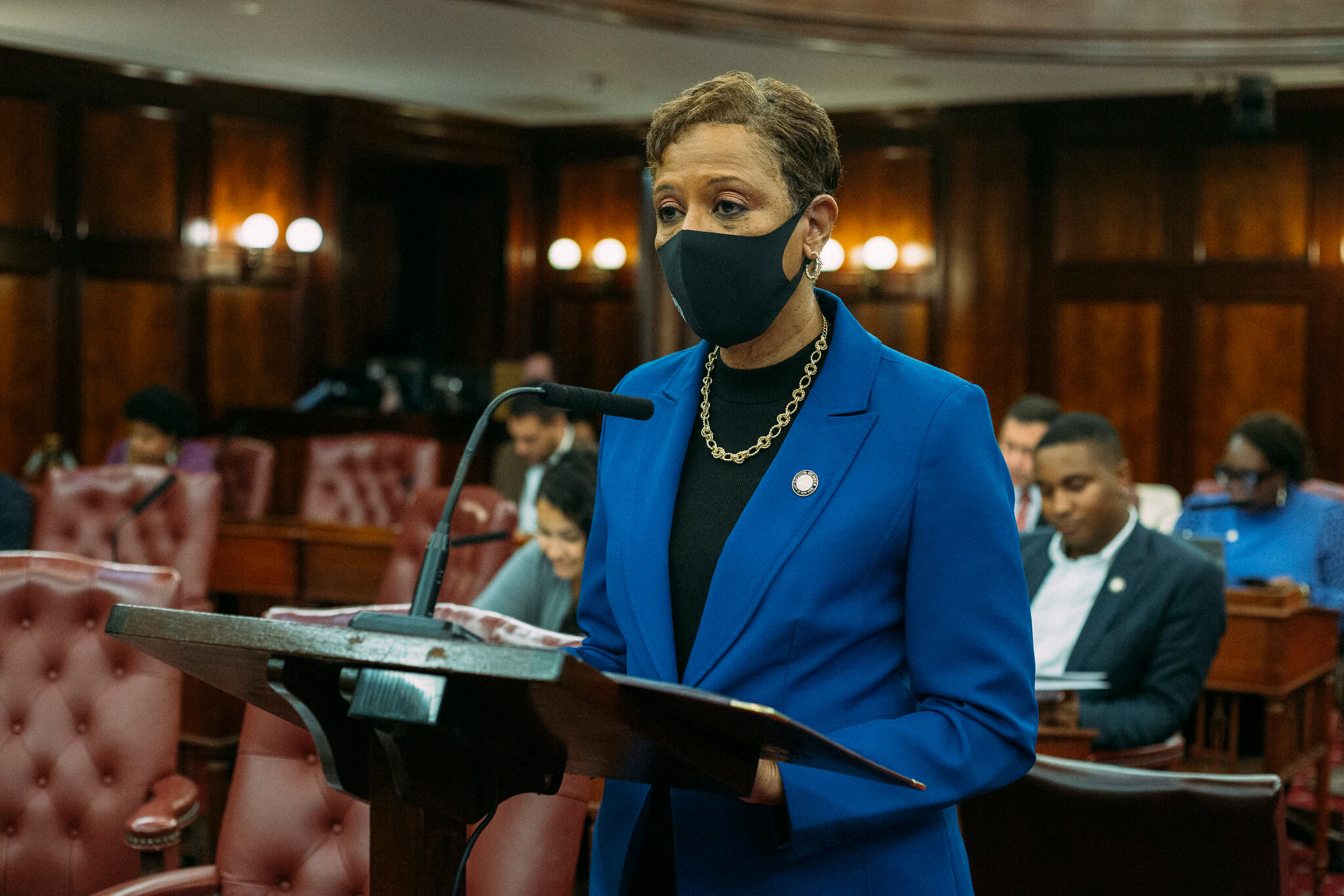
But the leaders in the City Council, who the mayor will need to work with in order to get several key components of Get Stuff Built off the ground, expressed skepticism about his plan. In their own statement, City Council Speaker Adrienne Adams and Council Finance Chair Justin Brannan (D-Brooklyn) said the mayor won’t succeed at speeding up the pace of housing production if he follows through on cuts to half of vacant positions at city agencies laid out in his November Financial Plan.
“A set of ideas focused on increasing the pace of development to confront the affordable housing shortage while simultaneously understaffing and eliminating positions at DOB, [the city Department of Housing Preservation and Development], and the agencies required to do the work will not move us forward,” they said.



